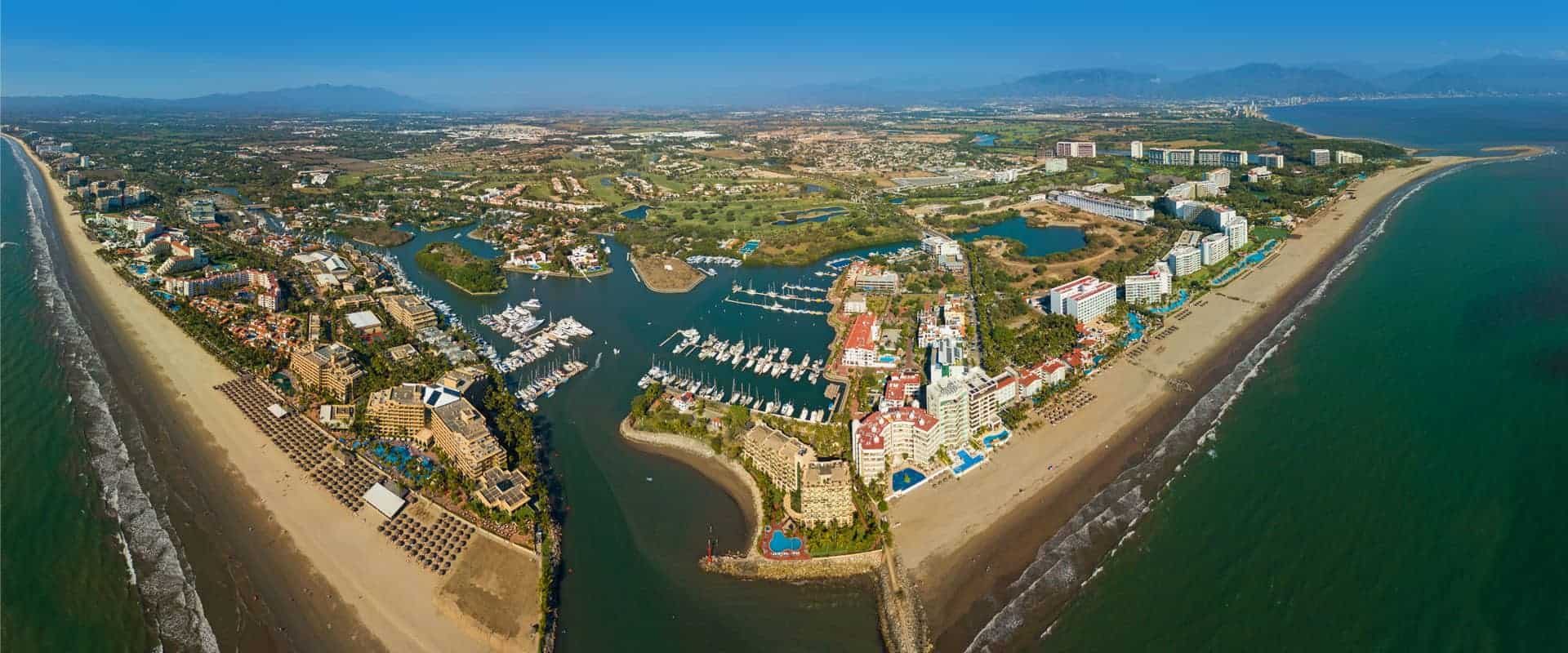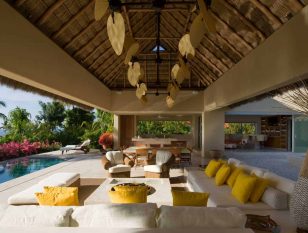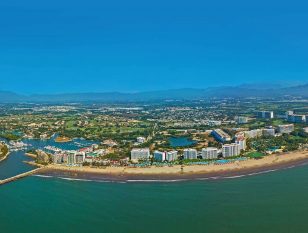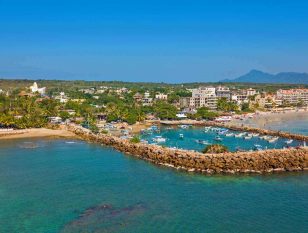
It has now been ten years since the dramatic economic downturn of 2007, which dramatically affected real estate prices and values throughout the USA, but also in other parts of the world, including Mexico. But where the results were more immediate in the U.S., it took awhile for Puerto Vallarta to fully realize to what extent its market had been impacted.
At MLSVallarta, we thought it would be interesting to revisit our information regarding 2007 and compare it to how the market is today, how it's recovered and then has begun to heat up again. Is it near 2007? That’s what we’ll be looking at.
It has always been difficult to obtain good statistical information on the local real estate market. Back then we relied on what was reported in the MLS system. But we also would survey, annually, the developments to procure what their inventory and pricing was, and what sales they had secured. This gave us enough data to work with to get a pretty good understanding of what was happening in the market. Today, MLS results are even more accurate, although there still is a lack good data coming from some developments that are not part or affiliated with a MLS system.
Up until and including 2007, Puerto Vallarta and Riviera Nayarit’s real estate market was in a buying frenzy. Realtors were working long days, developers couldn’t build fast enough, and no price seemed to be too high for motivated buyers, primarily Americans.
The market of 2007 and leading up to it were dominated by the products being offered by developers. Re-sales lagged primarily because buyers wanted new, more, bigger and better. Gross sales in 2007 were somewhere between $550-$700 million with about 75% of that produced by developers.
Today’s market, according to the MLS, shows $270 million for 2017, however that doesn’t not include all development projects. But even then, this number (number of developments today), is small, especially when compared to ten years ago. There are currently about 60 projects under development and a good portion of them are in the MLS system. In 2007 we counted more than twice as many developments and most weren’t in the MLS. In short, the market was probably double the size in gross sales in 2007 when compared to last year’s results.
It was a crazy market back then. At the time we were publishing Vallarta Lifestyles, an over-size luxury publication called Costa Vallarta and the Vallarta Real Estate Guide. Lifestyles reached 300 pages, Costa Vallarta was regularly close to 200 and the Real Estate Guide was over 100 pages, so thick the printer was having a difficult time stapling the publication and suggested we create two publications out of it. Today, Lifestyles and the Guide have half as many pages, and Costa Vallarta no longer exists. This isn’t taking anything away from the publications today as they are quite successful. It’s more a bellwether of the market back then, and where it's at today.
The average “listing” price for a condominium was $600,000 in 2007. Compare that to today where the average “sales” price is less than half of that. There were more than 120 projects in varying stages of development around the bay back then, with 15 of them offering condominiums with starting prices above $1 million.
In 2007, the average buyer’s budget was close to $500,000 USD, driven first by those who could afford more and, secondly, by increasing prices. Today realtors report that up until recently the typical buyer's budget was around $250,000 - half that of 2007.
They have reported, however, upward movement on this as we've moved into 2018. Some buyers are, once again, looking and willing to spend in the $600,000-$800,00 range. But the most common buyer’s price point is still quite below what it was in 2007.
In 2007 buyers were looking for condominiums that were stylish, luxurious and spacious. The first condo sale over $1 million took place and it was like when the four-minute mile was broken - more then began doing it. Million-dollar priced condos were common with the $2 million sale price barrier broken as well for a condominium that year. Three-bedroom condos with 3,000-6,000 f2 were being built, and sold. A project in Conchas Chinas, which involved demolishing an older oceanfront home and building six condominiums, saw the first initial sales go for $1.5 and $2.5 million USD.
New condos were still available for as low as $300,000, but this was becoming increasingly rare. With so many new developments there were never so many options and choices available. It became very competitive, with each developer needing an edge over the competition or they weren't going to sell, or at least not as quickly as they would like. Developers were offering extended short-term financing and special property amenities such as gyms and spas, clubhouses, even a new vehicle with the purchase of a home or condo.
Not today, or at least not up until now. People are looking for smaller, more practical units with less amenities, as these just drive up the price and HOA costs for common areas. Buyers are willing to give up views, once quite essential, to get something that fits their budget. One realtor, who lived through (and survived) 2007, told us that just it's just been this past season that he's once again begun showing million-dollar condos, a first in many years.
Today developers try to keep costs down by limiting extravagances in the units themselves and instead invest more in the common areas. We can especially see this in the downtown market. The new cool trend a few years ago was a roof-top pool. Today that is a standard feature for most new projects. Developers now try to out-do one another with inset seating in rooftop pools, bars, gyms, massage rooms, etc. As the market has heated up, though, developers are being forced to be more creative. A few years ago units were rather standard, lacking of amenities of 2007 as it was all about price points. That is changing as people have a little more to spend and there’s more competition.
What follows are some statistics that compare the two markets separated by a decade:
- In 2007 the average sales price for a condominium was $400,000 and the average size was 192 m2. In 2017 the average sales price for a condominiums was $275,000 and the average size was 142 m2. Sales prices were 45% higher and units were 35% larger in 2007 compared to in 2017.
- In 2007 the average sales price for a house was $723,000 and the average size was 318 m2 whereas in 2017 the average sales price for a house was $362,000 and the average size was 253 m2. Houses sold for double the price and units were 25% larger in 2007 when compared to 2017.
- In 2007 the Hotel Zone and Marina Vallarta accounted for nearly 46% of the sales, and it was nearly all new product. In 2017 they accounted for just 15% of all sales (and most were re-sales). In 2007 the downtown area had a few developments, with sales led primarily by Molina de Agua, but that still only accounted for 5% of all sales. In 2017 this area, primarily the south side, accounted for nearly 30% of total market sales. On the South Shore sales doubled over 2007, but were down 65% for the North Shore. (Lack of reporting in MLS is partially responsible for this). Bucerias, La Cruz, Nuevo Vallarta and Flamingos came in with similar percentages over both years.
- In 2007 there were 19 sales for homes and 8 sales for condominiums over US$1 million whereas in 2017 there were 10 sales for homes and 7 sales for condominiums over US$1 million (but four of these just made it with a sales price of exactly $1 million). In 2007 the highest sales price for a home was $4,455,000 and $2,730,000 for a condominium. while in 2017 the highest sales price for a home was $4,100,000 and $1,765,000 for a condominium.
During 2007 more than 50 new real estate projects came on line, totaling more than 120 in all, (compared to today where there are about 50-60), that added nearly 5,400 new properties to the market, or about 8,900 units in total. There were 1,032 reported sales, that left a balance going into 2008 of approximately 7,200 new development units. In other words, development inventory from one year to the next had doubled. Close to 2,000 of these units would not come to fruition as projects were cancelled. Even more came off the market as developers scaled back, or announced they would release only in stages. And there was concern that the market was now extremely over-built.
Of the 1,032 units sold in 2007 by non-MLS developers, nearly 10% of these deals would eventually not go through because buyers could not longer afford them. In 2008, developer sales dropped to just under 600 and by 2009 only 340 sales were reported, down 60% from the top in 2007.
By 2008 it was obvious to everyone that something seriously troubling was going on with the market. Inventory consisted primarily of new real estate with approximately $5 billion of it distributed amongst 5,400 units around the bay at varying stages of development.
Of the 138 developments we surveyed that year, 18 had had no sales, and those still on the market reported that:
- 42 were 25% sold out
- 45 were 25-50% sold out
- 18 were 51-75% sold out
- 15 were 76-99% sold out
- 10 were 100% sold out and off the market
- 75% still had at least 50% of their inventory unsold and there weren't a lot of people looking at them.
By 2009, we were ready to stop asking for information. Developers were embarrassed to talk about it and we were embarrassed to ask. But we did. We surveyed 122 projects, of which 18 were off the market, (cancelled) leaving 104. Of these:
- 40 projects had inventory pricing start at under $300,000.
- 18 had pricing starting at over $1 million (Imagine that. Today, there is not a project around the bay, except in Punta Mita, that is that emboldened).
- 43 developments reported no sales whatsoever. One third of all projects had no sales all year long.
- Only 7 reported double-digit numbers in sales.
- I'd like to repeat that in case you missed it: in 2009, out of 122 projects surveyed, 43 reported no sales. The faucet had been turned off.
And so began a long, slow, recovery process from 2011 to 2016.
The market today is nowhere near the level of frenzy that encapsulated the market in 2007. Average condo prices are still down over 30% from the peak. But they were, in our opinion, over-inflated back then and are more realistic today to what people can afford.
Condominiums were 35% larger in 2007, but today's average of 150 m2 offers a more realistic size that can very easily fulfill the needs of most condominium buyers. Builders are still building “affordable, more practical” units - rarely do you hear “luxury boutique” like you did in 2007. Buyers have gravitated back to the downtown core areas rather than outlaying regions, primarily for ease of socializing, access to restaurants and venues, lack of need for a car, and better security.
There doesn’t seem to be anything looming on the horizon that could change the current direction of the market (although, I also remember writing that in our 2006 Trends article).
There are some concerns, however, on the horizon. Mexico’s presidential elections will be held this year and a left-leading candidate is leading in the polls that has the business communities concerned. President Trump’s disregard for the value of Mexico as a neighbor and partner in economic trade & development and security, is also a concern. And, as always, security in Mexico, although Puerto Vallarta is currently referred to as one of the safest regions in the country.
In conclusion, there still seems to be some upside to this market, it is nowhere near the overbuilt levels of 2007, and prices are still quite a bit lower than the highs they once reached.
I'd like to thank Wayne Franklin at Tropicasa Realty, Carl Timothy at the Timothy Real Estate Group, Wally Lopez & Jonathon Smart at Riviera Partners Realty and Marc Sinanian at La Punta Realty, for their valuable feedback and information in generating this report.


